1. What is "Third Country Training Program"?
Third Country Training Program (TCTP) is a scheme in which JICA provides participants from developing countries with a technical training program in collaboration with a Southern partner (= third country) for the purpose of transfer or sharing of development experiences, knowledge and technology.
In most cases, these Southern partners who implement TCTPs with JICA have developed good knowledge or system in their own countries through prior JICA's cooperation.
TCTP system was created in 1974 and the first TCTP was conducted in March 1975 inviting 4 Laotian participants in a sericulture training center in Thailand. TCTP has two forms of implementation; One targets for a particular country, the other invites several countries with common problems or issues.
2. Achievements and trends
1) Latest achievements
The number of participants of TCTP reaches 3,551 in 2013.
The Middle East hosted the most participants, followed by the Southeast Asia and the Latin America. As regards beneficiary countries who sent participants to TCTP, the Africa, the Middle East and the Southeast Asia are among the top beneficiaries.

Number of participants in Third Country Training Program (by host region/ beneficiary region, (on the basis of only new projects))
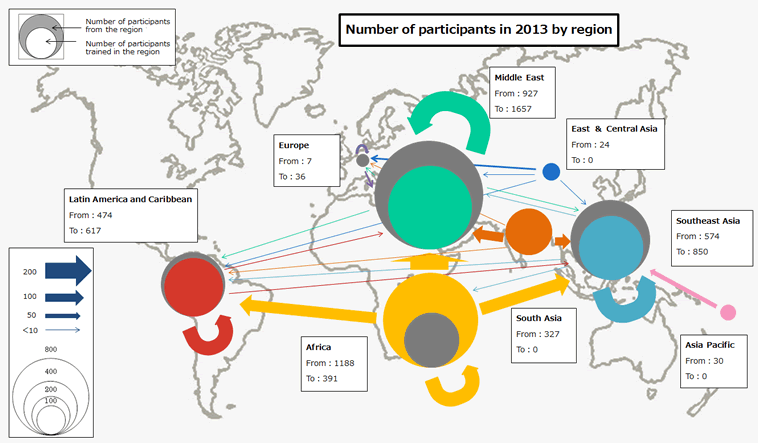
2) Trends
i) Trends in the number of participants (from 1981 to 2013)
The number of participants to TCTP has followed an upward trend for first two decades with several possible factors; 1) Japan signed "Partnership Program" for SSC/TrC with twelve countries from the mid 1990's to early 2000's, 2) expansion of SSC in Africa (as well as between Asia and Africa) was emphasized at the Second Tokyo International Conference on African Development (TICAD II) in 1998, and 3) TCTP has become an essential tool in supporting countries affected by conflict, such as Afghanistan, Iraq and Palestine.
For the past five years, the number of participants stayed around 3500 - 4000 per year.
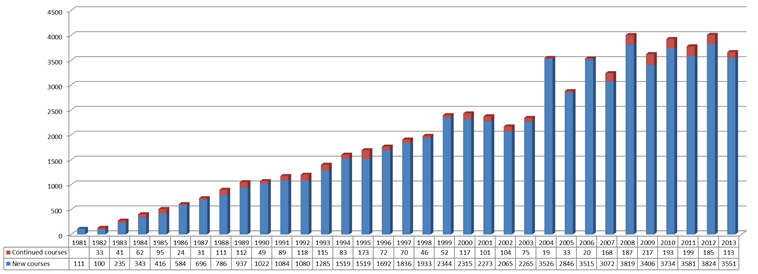
The total number of participants in TCTP
ii) Trends by beneficiary region (on the basis of only new projects)
Asia and America (North and South), who were the top beneficiary regions in 1980's and 1990's, account only 26 % and 13% respectively of the total number of the participants in 2013. On the other hand, the number of participants from Africa and Middle East has been increasing to reach 33% and 26% respectively in 2013.
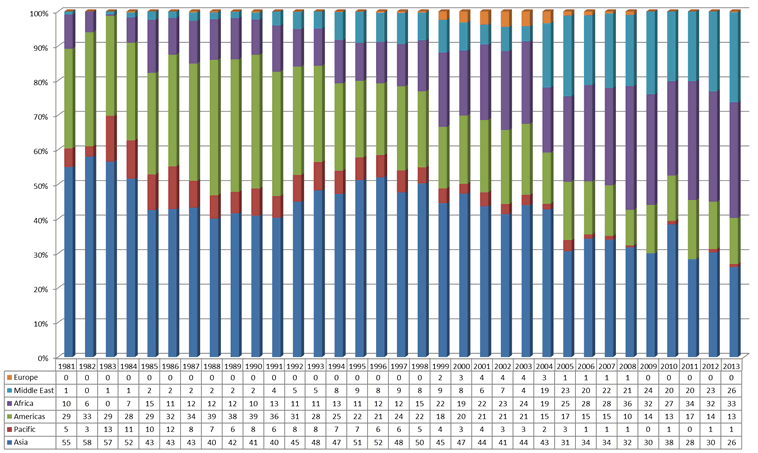
Percentage distribution of all the participants by beneficiary region (=region of origin)
iii) Trends by sector (on the basis of only new projects)
As regards sectors of training program, "Public works" sector, which had been once the most dominant area, has decreased in recent decades. The sectors which brought large numbers of participants in 2013 are: "Planning and administration" (22%), " Agriculture, Forestry and Fishing"(18%), "Human resource" (18%), "Energy"(13%), and "Healthcare" (11%).
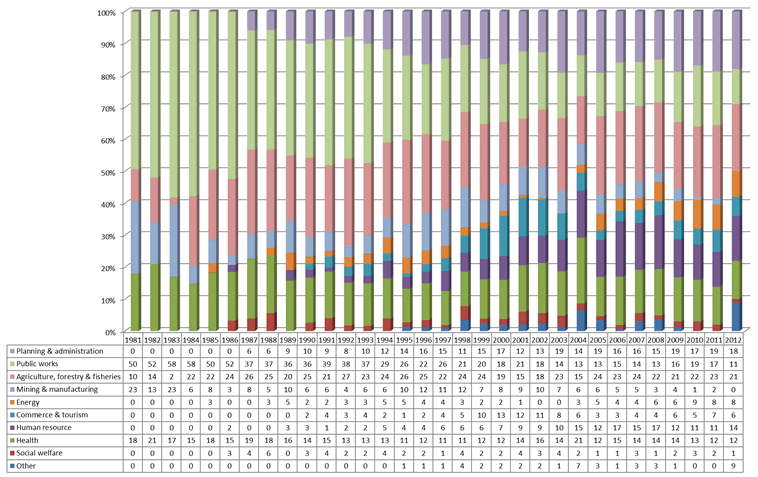
Percentage distribution of all the participants by sector
Third Country Experts Dispatch
1. What is "Third Country Experts Dispatch"?
JICA assists the dispatch of competent Southern officials and experts to another developing country for technical transfer and knowledge sharing , through a scheme called "Third Country Experts Dispatch (TCED)".
In most cases, these officials and experts are those who used to be (or have been) the counterparts of JICA's bilateral cooperation to their countries. The TCED scheme started in 1994, and for the first programs, two Indonesian experts on estate planning and river works were sent to the Philippines in March 1995, as well as two Singaporean education experts to Singapore, and three Thai healthcare experts to Sri Lanka.
2. Achievements and trends
1) Latest achievements
In 2013, 65 experts were sent on mission in the world. Their countries of origin and countries of assignments are as follows.
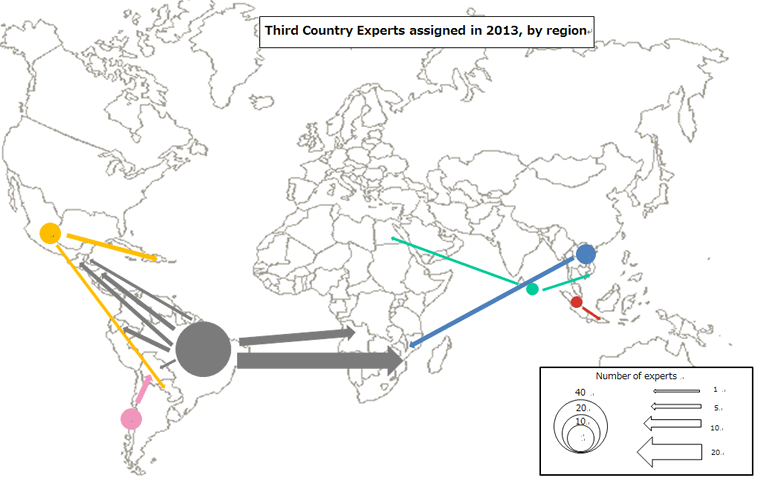
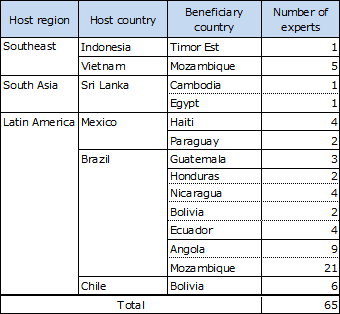
2) Trends
i) Trends in the number of assigned third country experts (from 1995 to 2013)
The number of third country experts varies from year to year, between 50 and 140 a year.
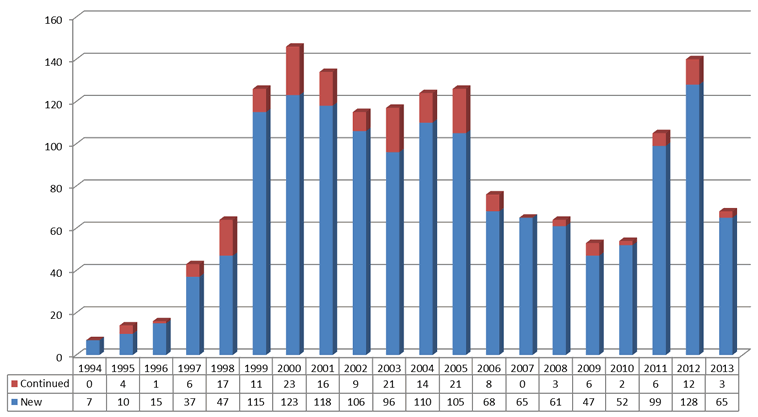
Trends in number of assigned third country experts
ii) Trends by region of assignment (on the basis of only new projects)
The following figure indicates the Asian region, which had occupied the highest proportion in the late 1990's, has reduced its percentage, while North and South America and Africa have increased theirs. The African region has rapidly increased its proportion since 2012, representing today nearly the half of the total.
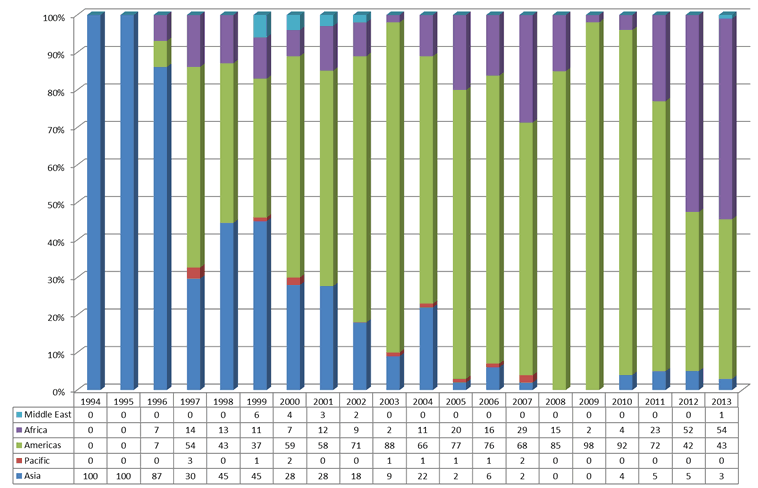
Percentage distribution of all the third country experts by region of assignment
iii) Trends by sector of expertise (on the basis of only new projects)
It is difficult to perceive a general trend in the fields of expertise of third country experts; nevertheless, Health sector has been recently increasing its proportion, while the agriculture, forestry and fishery sector has been on a downward trend.
In 2013, main sectors of expertise of the assigned experts are: health sector (54%), agriculture, forestry and fishery sector (15%) and public works sector (12%).
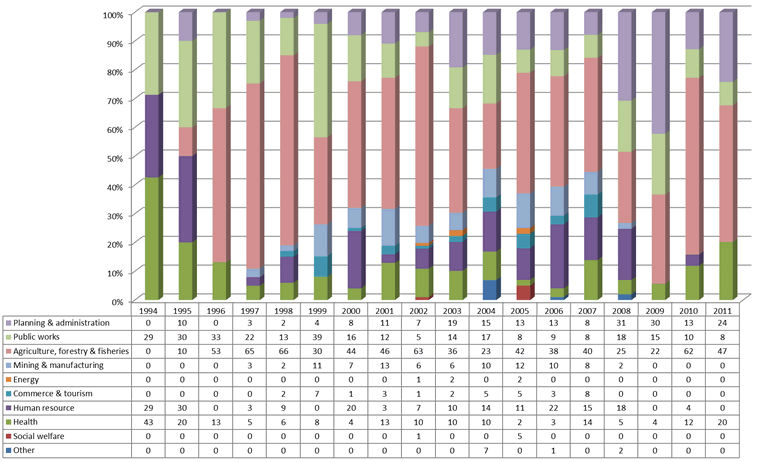
Percentage distribution of all the third country experts by sector of expertise




scroll